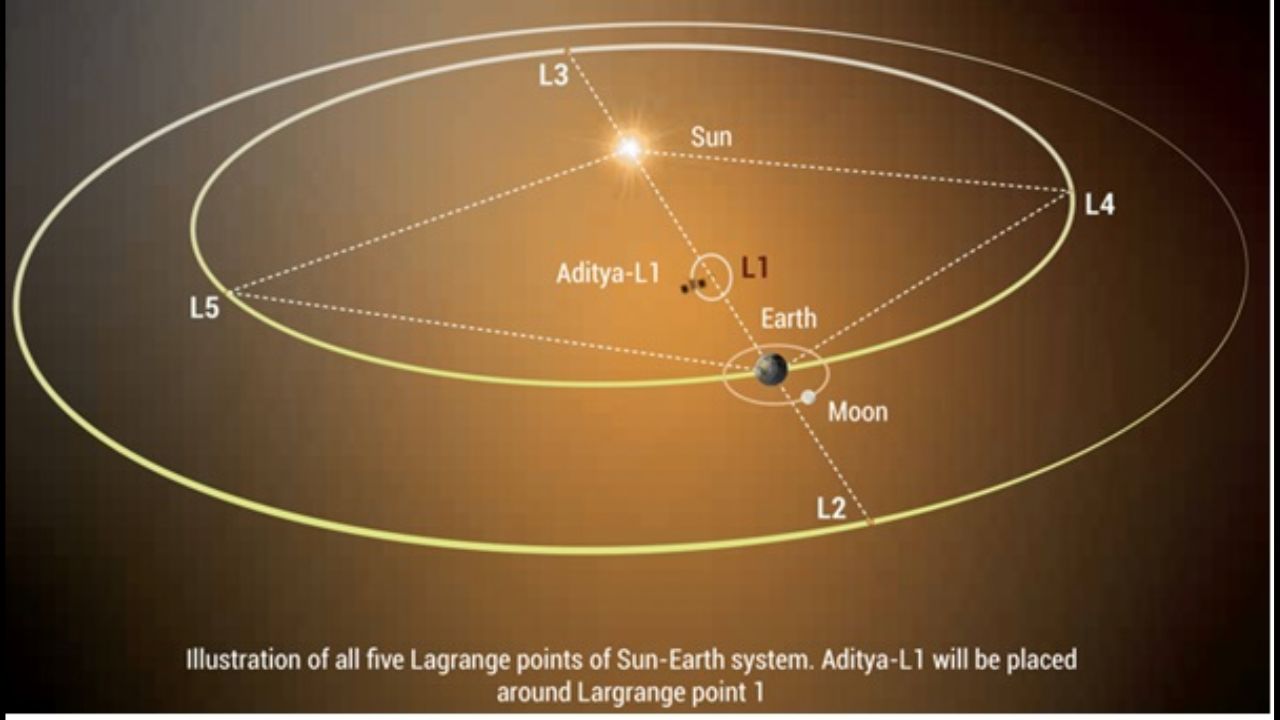Why Aditya is Positioned at L1 – The Reason Behind It
The job would have been a lot easier if Aditya had been put in orbit around the Earth. But this would also mean that Earth would block Aditya’s view of the Sun for long stretches of time.

Why Aditya is Positioned at L1: ISRO sent Aditya-L1 into space on September 2, 2023, so it could study the Sun and help us learn more about it. It gets to its final stop today, which is L1, or the first Sun-Earth Lagrangian point.
The task is important, which is why it is at the L1 point. Here is everything you need to know about it.
Why Aditya is Positioned at L1?
The job would have been a lot easier if Aditya had been put in orbit around the Earth. But this would also mean that Earth would block Aditya’s view of the Sun for long stretches of time. You can cut down on the length of these eclipses by picking the right path, but they can’t be completely avoided. It is important for Aditya to have a clear view of the Sun because it is meant to be an early warning system for solar flares and coronal mass ejections.
The Earth is always on one side of Aditya at L1, and the Sun is always on the other. So, the equipment on the spaceship can be pointed straight at the Sun for a clear view. While it is difficult to get the spaceship into an orbit around L1, the benefits of always being able to see the Sun are well worth the trouble, risk, and cost.
A lot of soacecraft are already parked close to L1. One of these is the Solar and Heliospheric Observatory (SOHO), which is a joint project between NASA and ESA. Another is the LISA Pathfinder.
Check Out: Alaska Airlines Emergency Landing in Portland as Window Blows Out Mid-Air – Watch the Video!
What is Aditya-L1 going to do?
The devices on Aditya-L1 can look at the ultraviolet light from the corona and learn more about how it works since it is not in Earth’s atmosphere. We also need to keep an eye on the Solar atmosphere and corona all the time to see when the Sun erupts and to learn more about the charged particles in the Solar wind.
It is very important that this job be done as close to the Sun as possible, outside of Earth’s atmosphere. In turn, this will help us get early warning of solar explosions so we can take steps to lessen the damage they might do.
Aditya-L1 has seven sensors that can look at all the charged particles and radiation. It is 1.5 million km from Earth and facing the Sun (more on that next). This makes it possible to observe without interruption.
What is L1?
L1 is the first Lagrangian point. There are five of these points, called L1 through L5, that show how one cosmic body moves around another body. In Aditya’s case, these are the Earth and the Sun. In theory, the Swiss mathematician Leonhard Euler and the Italian-French mathematician Joseph-Louis Lagrange found these points in the 1800s. Points L1 and L2 are especially important to us because they have to do with space projects.
When a spaceship is in orbit around Earth, the planet’s gravity pulls on it. What keeps it from hitting the ground is that Earth’s gravity is balanced by a rotational force that comes from the ship moving around the Earth.
Spacecraft are pulled away from Earth by its gravity less and less as they move farther away. A certain point will come when Earth’s gravity pull is about the same as the Sun’s. The faster a spacecraft goes, the more it will be pulled into orbit around the sun or will finally crash into it.
The sweet spot between Earth and the Sun is L1. This is where the rotational force and the gravitational force on a spaceship cancel each other out. This meant that once Aditya was put exactly at L1, he would stay there without using any energy.
Check Out: Police Perspective on the Plane Crash that Killed Christian Oliver and His Daughters
Does this mean that Aditya is in space and can’t move?
Figure 1 shows that L1 is not on the line that goes from the Sun to the Earth. Though Aditya will stay in the same space spot, it will not be the same spot as the Sun or Earth.
A small pull or push can send the spaceship shooting off in a different direction. This is because the L1 point is fundamentally unstable. To avoid this, Aditya is put in a circle around L1.
A complex orbit that is almost perpendicular to the line that connects the Sun and Earth. It will take the spaceship 178 days to make one full circle.
